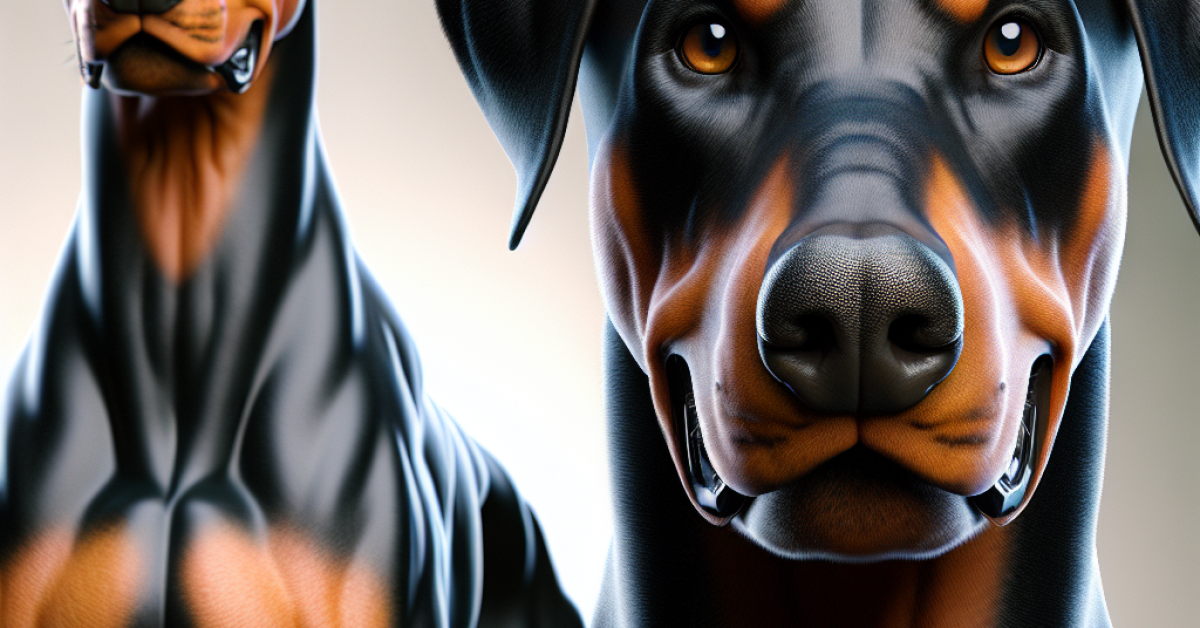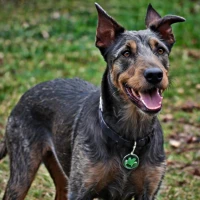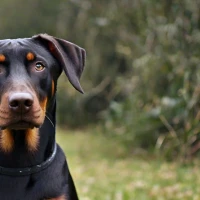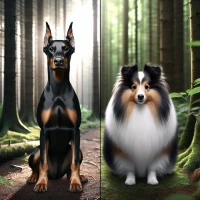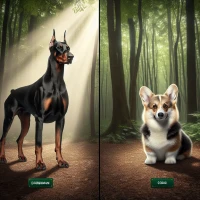The Ultimate Doberdane Care Guide: Health, Nutrition, and Exercise Tips
Combining the elegance of the Doberman Pinscher with the imposing stature of the Great Dane, the Doberdane is quickly gaining popularity as a lovable designer breed. If you’re considering bringing home this gentle giant, it’s essential to understand the breed’s needs and characteristics thoroughly. This comprehensive care guide will shed light on breed specifics, training, nutrition, exercise tips, and more to equip you with the knowledge to provide your Doberdane with the best possible care.
Breed History and Origins
The Doberdane is a hybrid breed, resulting from crossing two highly esteemed companions: the agile and loyal Doberman Pinscher and the gentle yet impressive Great Dane. Designer dog breeds like the Doberdane have grown steadily in popularity over recent decades, with breeders aiming to combine desirable traits from the parent breeds to produce healthier, well-balanced, and family-friendly companions.
- The Doberman Pinscher, originating in Germany during the late 19th century, is renowned for its athletic agility, keen intelligence, and protective loyalty.
- The Great Dane, with historical roots in ancient civilizations like Egypt and China and later developed extensively in Germany, is celebrated as a gentle and affectionate companion known for its majestic stature and calm disposition.
The Doberdane elegantly balances these qualities, providing prospective owners with both affection and security.
Characteristics and Physical Appearance
Doberdanes typically exhibit a harmonious blend of their parent breeds’ traits. Although there’s considerable variance based on genetics, you can expect some general characteristics:
- Size and Height: Doberdanes are large, powerful dogs, typically standing between 27 to 32 inches tall and weighing around 90 to 140 pounds.
- Coat and Color: Their short coat is smooth and low-maintenance. Common coat colors include black, fawn, blue, brindle, and various color combinations inherited from either parent.
- Life Expectancy: With proper care, the Doberdane’s average lifespan is around 8-12 years.
Temperament and Personality Traits
Known for their calm yet protective nature, Doberdanes are excellent companion dogs. Their personalities are typically a gentle combination of the Great Dane’s sweet temperament and the Doberman’s protectiveness and loyalty.
Key Traits:
- Highly intelligent and trainable
- Loyal, affectionate, and protective
- Usually calm and well-mannered indoors
- Great playfulness and energy outdoors
Training and Socialization Requirements for Doberdanes
Training and proper socialization are critical elements in raising a well-adjusted Doberdane. Due to their size and intelligence, consistent training from puppyhood is vital.
Expert Training Tips:
- Positive Reinforcement: Use rewards-based training rather than punishment. Doberdanes respond spectacularly to positive reinforcement like praise, treats, and play.
- Consistency: Stick to regular training sessions with consistent cues and commands to avoid confusion.
- Early Socialization: Introduce your Doberdane puppy to various environments, other animals, and humans to build confidence and positive behavior.
Doberdanes benefit greatly from obedience training classes, helping to manage their size, strength, and protective nature effectively.
Health Considerations and Common Health Issues
Despite often benefiting from hybrid vigor, Doberdanes can still inherit breed-specific health conditions common to their parent breeds, such as:
- Hip Dysplasia: Regular veterinary checks can detect this condition early and minimize complications.
- Dilated Cardiomyopathy (DCM): Common particularly in Dobermans, routine check-ups with a veterinarian can aid in early detection.
- Gastric Torsion (Bloat): Deep-chested breeds like Doberdanes may experience bloat; feeding smaller, frequent meals and avoiding strenuous activity after feeding can reduce risk.
- Hypothyroidism: Annual blood tests and vigilant observation can help identify this manageable condition.
Important Tip: Before acquiring a Doberdane puppy, ensure the breeder has performed necessary health screenings of both parent breeds.
Nutrition and Diet: Providing the Right Fuel
Proper nutrition is crucial to supporting a Doberdane’s large frame and high energy levels:
Feeding Guidelines:
- High-quality, protein-rich dog food formulated specifically for large or giant breeds is essential.
- Feed adult Doberdanes two smaller meals per day rather than one large meal, reducing bloating risk.
- Monitor caloric intake carefully, as Doberdanes can easily become overweight if overfed or kept sedentary.
Recommended Nutritional Content:
- Protein content: approximately 25-30%
- Premium animal-sourced proteins such as chicken, beef, or fish
- Balanced omega fatty acids supporting joints, skin, and coat health
Exercise Requirements and Physical Activities
As energetic and powerful dogs, Doberdanes require daily exercise to maintain a healthy weight and temperament. Exercise also helps prevent behavioral problems stemming from boredom or excess energy.
Recommended Exercises:
- Daily Walks: One or two brisk daily walks lasting approximately 30-45 minutes each.
- Interactive Activities: Mental stimulation games, agility, fetch, or interactive puzzles are beneficial for cognitive stimulation.
- Enclosed Play Area: Regular free time in a secure fenced area where your Doberdane can safely expend energy.
Are Doberdanes Good Family Pets? Debunking Common Misconceptions
Many misconceptions exist regarding large breeds like Doberdanes. Some common myths include aggressiveness or poor suitability for families:
-
Myth: Doberdanes are aggressive due to their Doberman heritage.
Fact: With responsible breeding and proper training, Doberdanes are gentle, friendly, protective and make excellent family companions. -
Myth: They’re unsuitable for children.
Fact: Doberdanes generally have gentle temperaments, demonstrating patience and protective affection towards children, provided correct training and socialization occur from a young age (Doberdane characteristics).
It is essential, given their size, that Doberdanes are trained and supervised around small children to prevent accidental injuries.
Actionable Tips & Expert Advice Recap
- Start training and socialization early.
- Choose high-quality, breed-specific nutrition.
- Regular veterinary check-ups are vital to catch health conditions early.
- Provide daily physical and mental exercise routines.
- Be mindful of breed misconceptions and educate others responsibly.
Statistics and Research Findings
- According to the AKC, Dobermans are ranked as the 5th smartest dog breed, meaning your Doberdane has inherited excellent intelligence genes American Kennel Club.
- Veterinary experts estimate 20-25% of large breed dogs can experience hip dysplasia due to genetic and lifestyle factors Orthopedic Foundation for Animals.
Final Thoughts
With regular care, dedicated training, and responsible ownership, your Doberdane can grow into a loyal, loving, and valued family member. Understanding their unique needs and characteristics ensures a long-lasting and enriching relationship.
Further Reading and References
- Doberdane Characteristics and Breed Information
- Doberman Pinscher and Great Dane Breed History
- Canine Dilated Cardiomyopathy - Merck Veterinary Manual
- Preventing Gastric Dilatation-Volvulus
This comprehensive care guide aims to provide the foundational knowledge necessary to provide informed, responsible, and compassionate care for your Doberdane.
